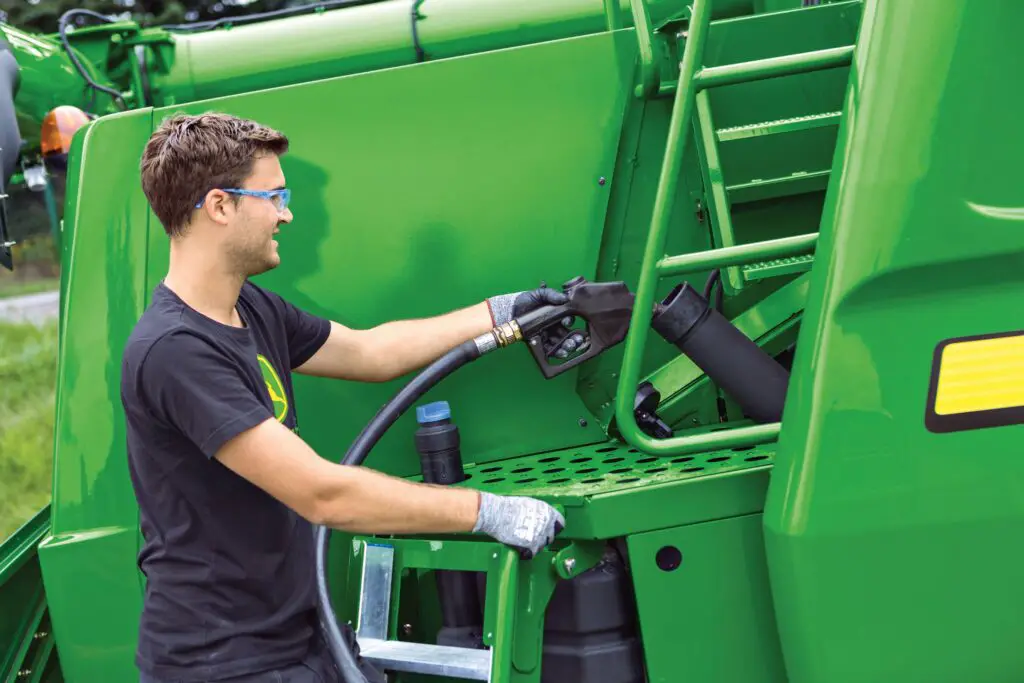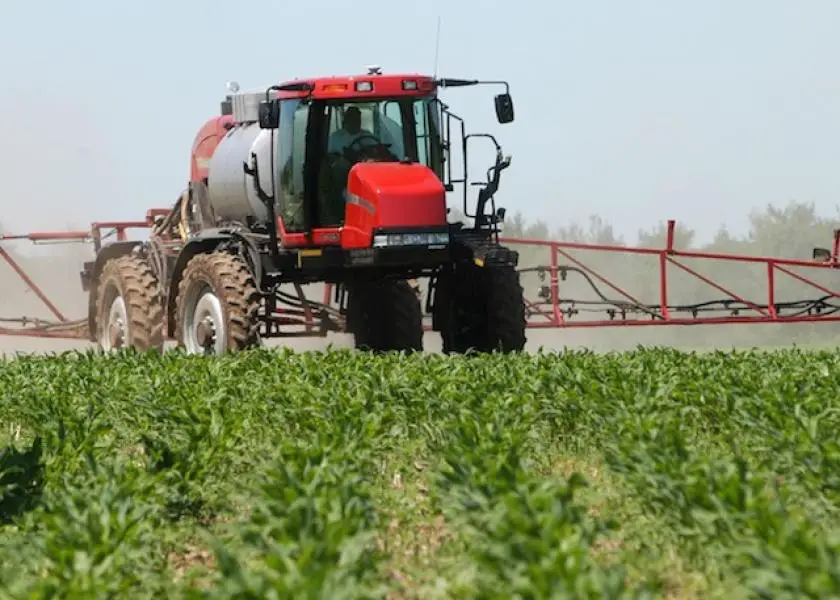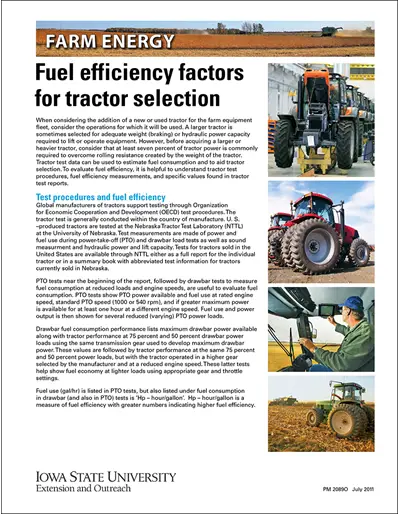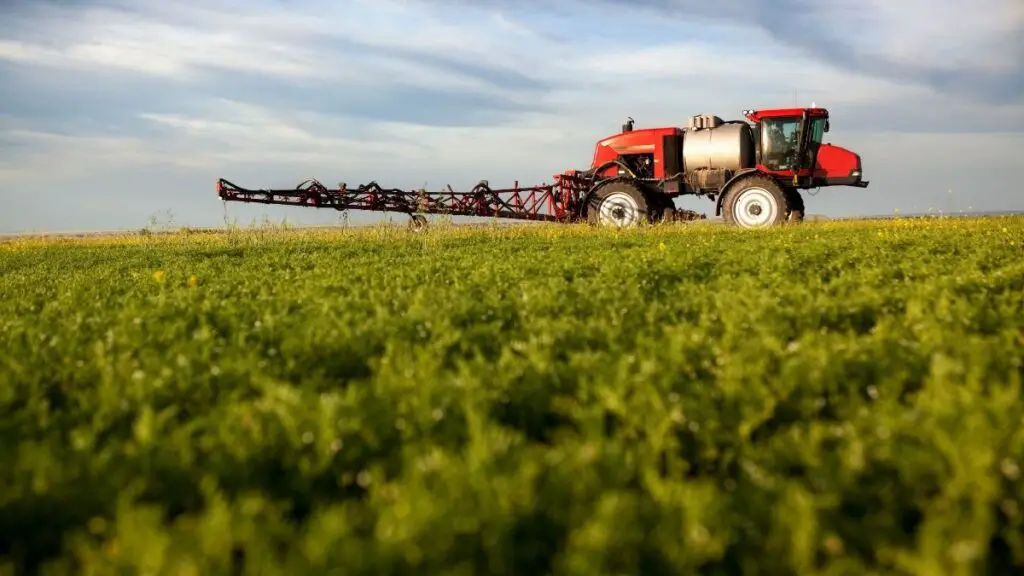This post may contain affiliate links which means I may receive a commission for purchases made through links. Learn more on my Private Policy page.
If you’re a farmer looking to reduce your fuel costs and decrease your environmental footprint, you may be wondering how to make your farm machinery more fuel-efficient. From optimizing your machinery’s performance to implementing smart practices, there are several strategies you can employ to improve fuel efficiency on your farm. Whether you’re operating tractors, combines, or other heavy machinery, this article will provide you with valuable tips and insights to help you maximize fuel efficiency and save money in the long run.

This image is property of www.koenigequipment.com.
1. Regular Maintenance
Regular maintenance is crucial for ensuring the optimal performance and fuel efficiency of your farm machinery. By following a few simple steps, you can keep your equipment in top shape and minimize fuel consumption.
1.1. Keep machinery clean
Keeping your machinery clean may seem like a simple task, but it can have a significant impact on fuel efficiency. A buildup of dust, dirt, and debris can restrict air flow and cause your engine to work harder. Regularly wash your machinery, paying close attention to air intakes and cooling systems.
1.2. Check and replace air filters
Air filters play a crucial role in preventing dirt and dust from entering your engine. Over time, these filters can become clogged, reducing airflow and increasing fuel consumption. Regularly inspect and clean or replace air filters to ensure optimal performance.
1.3. Maintain proper tire pressure
Proper tire pressure is essential for efficient machinery operation. Underinflated tires increase rolling resistance, requiring more energy and fuel to move your equipment. On the other hand, overinflated tires can lead to uneven wear and reduced traction. Regularly check tire pressure and adjust it according to the manufacturer’s recommendations.
1.4. Lubricate moving parts
Proper lubrication is essential for reducing friction and ensuring smooth operation of moving parts. Regularly inspect and lubricate critical areas such as bearings, joints, and linkages. This not only improves fuel efficiency but also extends the lifespan of your machinery.
1.5. Inspect and repair exhaust systems
A poorly functioning exhaust system can lead to decreased fuel efficiency and increased emissions. Inspect your exhaust system regularly for leaks, cracks, or clogs. Repair or replace any damaged components to ensure optimal performance.
2. Optimize Machinery Operation
In addition to regular maintenance, optimizing your machinery operation can significantly improve fuel efficiency. By following some simple practices, you can reduce fuel consumption while maximizing productivity.
2.1. Practice proper warm-up and cool-down
Before starting your machinery, allow it to warm up for a few minutes to ensure optimal performance. Similarly, after a long period of operation, give your equipment time to cool down before shutting it off. By following these practices, you can reduce fuel wastage and prevent unnecessary wear and tear.
2.2. Avoid excessive idling
Excessive idling can waste a significant amount of fuel without any productive output. Whenever possible, avoid leaving your machinery idling for extended periods. Shut off the engine if it will be stationary for more than a few minutes. This simple habit can lead to substantial fuel savings over time.
2.3. Opt for slow and steady operation
While it may be tempting to rush through tasks, operating your machinery at higher speeds can result in increased fuel consumption. Whenever feasible, opt for slower, steady operation. This allows your equipment to work efficiently and reduces fuel usage.
2.4. Avoid unnecessary weight
Carrying unnecessary weight adds strain to your machinery’s engine and increases fuel consumption. Periodically evaluate the weight you are transporting and eliminate any excess weight that is not essential for the task at hand. This will not only improve fuel efficiency but also reduce wear and tear on your equipment.
2.5. Make the most of gravity on hilly terrain
When working on hilly terrain, take advantage of gravity to reduce fuel consumption. On downhill slopes, shift your machinery into neutral to coast and minimize engine load. Use momentum gained on downhill stretches to power uphill climbs more efficiently.
3. Upgrade to More Fuel-Efficient Machinery
If you are looking for a long-term fuel efficiency solution, consider upgrading your machinery to more fuel-efficient models. Modern advancements in technology have resulted in the availability of a wide range of options that can help you reduce fuel consumption significantly.
3.1. Evaluate fuel efficiency ratings
When considering new machinery, carefully evaluate the fuel efficiency ratings provided by manufacturers. Look for models that are specifically designed to be fuel-efficient and have a proven track record of minimizing fuel consumption.
3.2. Consider hybrid or electric options
Hybrid and electric machinery can provide substantial fuel savings and reduce emissions. These innovative technologies combine traditional combustion engines with electric power, resulting in increased efficiency and decreased reliance on fossil fuels. Evaluate the feasibility of incorporating hybrid or electric options into your fleet.
3.3. Explore precision agriculture technologies
Precision agriculture technologies, such as GPS guidance systems and automated controls, have the potential to improve fuel efficiency. These technologies help optimize field operations by minimizing overlap and reducing wasted resources. Explore the various precision agriculture tools available and determine how they can benefit your farm.
3.4. Calculate potential cost savings
Before investing in new machinery, calculate the potential cost savings that can be achieved through fuel efficiency improvements. Consider the upfront cost of the equipment, ongoing fuel savings, and any applicable incentives or grants. This analysis will help you make an informed decision and determine the return on investment.
4. Implement Fuel Management Strategies
Implementing fuel management strategies can help you monitor and control fuel consumption, leading to significant cost savings. By adopting a proactive approach to fuel usage, you can identify areas for improvement and make informed decisions.
4.1. Use fuel additives and conditioners
Fuel additives and conditioners can help improve combustion efficiency, reduce carbon deposits, and clean fuel injectors. Consider incorporating these products into your fueling routine to maximize fuel efficiency and engine performance.
4.2. Track fuel consumption and identify patterns
Regularly track and monitor fuel consumption for each piece of machinery. Analyze the data to identify patterns and potential areas of improvement. This information can help you make informed decisions about fuel usage and make adjustments as needed.
4.3. Plan efficient machinery routes
When planning field operations, optimize machinery routes to minimize travel distances and eliminate unnecessary overlaps. Incorporate GPS technology and mapping systems to plan the most efficient routes for each task. This will reduce fuel consumption and increase overall productivity.
4.4. Reduce unnecessary machinery usage
Evaluate your machinery usage and eliminate any unnecessary operations. Consolidate tasks whenever possible to reduce the number of trips and decrease fuel consumption. Consider grouping similar jobs together to make the best use of your equipment and minimize idle time.

This image is property of ccms.farmjournal.com.
5. Consider Alternative Fuel Sources
In addition to upgrading machinery, exploring alternative fuel sources can offer long-term fuel efficiency solutions. With a focus on sustainability and environmental stewardship, alternative fuels can help reduce dependency on fossil fuels while lowering operating costs.
5.1. Explore biofuels
Biofuels, such as biodiesel and ethanol, are derived from renewable resources and offer a more sustainable fuel option. Investigate the feasibility of incorporating biofuels into your machinery fleet and evaluate their impact on fuel efficiency.
5.2. Investigate renewable energy options
Renewable energy sources, such as solar or wind power, can be utilized to generate electricity for auxiliary systems on your farm. Consider installing solar panels or small wind turbines to power lighting, water pumps, or other electrical equipment. By utilizing renewable energy, you can significantly reduce dependence on fossil fuel-generated electricity.
5.3. Utilize solar or wind power for auxiliary systems
In addition to generating electricity, solar or wind power can be used to charge batteries for electric vehicles or machinery. Taking advantage of these renewable energy sources can reduce fuel consumption and environmental impact.
6. Improve Equipment Design and Modifications
Making design modifications and improvements to your existing machinery can enhance fuel efficiency and reduce operating costs. Consider the following measures to optimize equipment performance.
6.1. Enhance aerodynamics
Streamlining the design of your machinery can significantly reduce wind resistance and improve fuel efficiency. Work with equipment manufacturers to explore aerodynamic modifications that can be made to your machinery, such as improved cowls or fairings.
6.2. Install energy-efficient lighting
Switching to energy-efficient LED lighting can reduce power consumption and extend battery life. Install LED lights on your machinery to minimize energy usage without compromising visibility or safety.
6.3. Incorporate energy recovery systems
Energy recovery systems, such as regenerative braking, can capture and store energy generated during braking or deceleration. This energy can then be reused to reduce fuel consumption during acceleration. Explore the feasibility of incorporating energy recovery systems into your machinery to maximize fuel efficiency.
6.4. Optimize engine performance
Engines that are properly tuned and maintained operate more efficiently and consume less fuel. Consider consulting with an engine specialist to optimize engine performance, including fuel injection timing and air-to-fuel ratios, for maximum efficiency.
6.5. Implement automatic shut-off systems
Installing automatic shut-off systems on your machinery can prevent unnecessary fuel wastage during idle periods. These systems can be programmed to shut off the engine after a specified period of inactivity, reducing fuel consumption and emissions.

This image is property of storemedia.extension.iastate.edu.
7. Educate and Train Machinery Operators
Machinery operators play a crucial role in fuel efficiency. By providing them with proper training and education, you can promote eco-friendly and fuel-efficient operating practices.
7.1. Provide fuel efficiency training
Offer training programs to educate machinery operators about the importance of fuel efficiency and the impact of their actions on overall fuel consumption. Teach them techniques to optimize machinery performance and reduce fuel usage.
7.2. Promote eco-driving techniques
Encourage machinery operators to practice eco-driving techniques, such as smooth acceleration and deceleration, maintaining consistent speeds, and avoiding rapid changes in direction. These practices not only improve fuel efficiency but also enhance safety and reduce wear and tear on equipment.
7.3. Encourage regular communication among operators
Facilitate regular communication among machinery operators to share best practices, insights, and fuel efficiency tips. Encouraging collaboration and knowledge sharing can lead to collective improvements in fuel efficiency across your farm.
8. Utilize Precision Farming Techniques
Precision farming techniques leverage advanced technologies to optimize field operations and preserve resources. These techniques help reduce fuel consumption by minimizing unnecessary inputs and improving overall efficiency.
8.1. Employ GPS and mapping technologies
GPS and mapping technologies enable accurate field mapping and guidance systems, ensuring machinery operates precisely within predetermined boundaries. This eliminates overlaps and reduces the need for rework, resulting in fuel savings.
8.2. Utilize variable rate application systems
Variable rate application systems allow for precise application of fertilizers, herbicides, and other inputs based on field variability. By applying inputs only where and when needed, fuel consumption is minimized, and input utilization is optimized.
8.3. Optimize field and crop management practices
Implementing precision farming techniques, such as soil mapping and yield monitoring, can help optimize field and crop management practices. By identifying areas of the farm that require special attention, you can allocate resources more efficiently, reducing fuel consumption.

This image is property of i0.wp.com.
9. Maintain Proper Equipment Balance
Proper equipment balance is essential for efficient operation and fuel consumption. Consider the following methods to optimize equipment balance and reduce fuel wastage.
9.1. Optimize weight distribution
Ensure that weight is distributed evenly across your machinery to prevent unnecessary strain on certain components. Uneven weight distribution can lead to increased friction, higher fuel consumption, and premature wear and tear. Consult equipment manuals and consider professional advice to achieve optimal weight distribution.
9.2. Use appropriate ballasting techniques
Ballasting involves adding weights to your machinery to optimize traction and stability. Using appropriate ballasting techniques for different conditions can help improve fuel efficiency by reducing slippage and allowing for smoother operation.
10. Stay Up-to-Date with Technological Advancements
Staying updated with the latest technological advancements can give you a competitive edge in fuel efficiency management. Regularly research and invest in new innovations that can enhance the fuel efficiency of your machinery.
10.1. Research and adopt latest fuel-saving innovations
Keep abreast of the latest fuel-saving innovations in the agricultural machinery industry. Research technologies such as advanced fuel injection systems, engine management systems, or intelligent powertrain designs. By adopting these innovations, you can further improve fuel efficiency and reduce operating costs.
10.2. Attend industry conferences and events
Industry conferences and events provide a platform to learn about cutting-edge technologies and best practices in fuel efficiency management. Networking with industry professionals and attending workshops or seminars can help you stay informed about the latest advancements in the field.
By implementing the suggestions outlined in this comprehensive guide, you can make your farm machinery more fuel-efficient. Remember, a proactive approach to regular maintenance, optimizing machinery operation, considering alternative fuel sources, implementing fuel management strategies, and staying updated with technological advancements can contribute to significant fuel savings and a greener, more sustainable farming operation.

This image is property of www.agritechtomorrow.com.
This post may contain affiliate links which means I may receive a commission for purchases made through links. Learn more on my Private Policy page.

